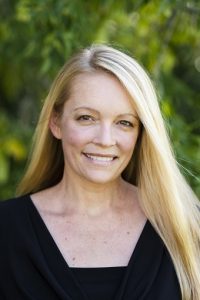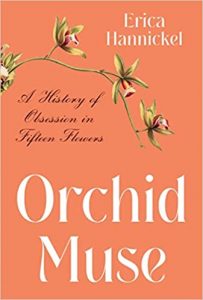From Science to Story: Nonfiction and Audience
From Science to Story: Nonfiction and Audience
By Erica Hannickel
 My first book, a dissertation-turned-monograph about wine history, caught academic success, but contemporary wine industry people (from what I could judge) hated it. They seemed to think that I had a special axe to grind with wine. In truth, 19th century American historians had covered the dark sides of other major commodity crops (sugar, cotton, tobacco, corn) for decades. I felt I was filling gaps with my history of wine—OK, maybe I also thought I might set the romantic narrative about California wine on its ear—but people in the business took it as an all-out assault on the thing they most dearly loved and made their living by. (If only they had known how much Two-Buck Chuck I drank after long days of writing.) Of course, I didn’t write the book for the wine industry, but I had hoped that there would be something they might gain from reading it. Ultimately I wasn’t able to vault over the wall standing between academe and the real world.
My first book, a dissertation-turned-monograph about wine history, caught academic success, but contemporary wine industry people (from what I could judge) hated it. They seemed to think that I had a special axe to grind with wine. In truth, 19th century American historians had covered the dark sides of other major commodity crops (sugar, cotton, tobacco, corn) for decades. I felt I was filling gaps with my history of wine—OK, maybe I also thought I might set the romantic narrative about California wine on its ear—but people in the business took it as an all-out assault on the thing they most dearly loved and made their living by. (If only they had known how much Two-Buck Chuck I drank after long days of writing.) Of course, I didn’t write the book for the wine industry, but I had hoped that there would be something they might gain from reading it. Ultimately I wasn’t able to vault over the wall standing between academe and the real world.
I took a few lessons from the experience. If I wrote that book again today, I wouldn’t delete content, but I would moderate the tone. I would also add more moments of wine celebration and appreciation so that more people might be willing to hear the consistently darker parts of the story.
But I haven’t re-written that book. Instead, now a tenured professor with nothing to lose, I decided to write a book that fired my passion for orchids and global cultural history, and I wanted to reach a trade audience I felt I knew well. Writing Orchid Muse: A History of Obsession in Fifteen Flowers was an utterly different experience because of it. While the dissertation-turned-book is almost always a painful ordeal, I never wanted to stop writing the orchid book. And I’m hoping flower-lovers of all stripes take it as its intended to be: a love letter to the history of orchids, including all the dark, the light, the obscene, and the beautiful bits of it.
But how should nonfiction writers incorporate the political with the scientific, the historical with pressing current events? How do we set facts within an appealing narrative that says something new, and speak to readers who grow more politically polarized by the day? My advice boils down to six major takeaways about writing great nonfiction today. It’s all about the audience.
- Know your audience. No, be your audience.
Any good guide to writing nonfiction book proposals will tell you this, but there’s never enough said for having a community of interested folks around your subject. (I find Susan Rabiner’s Thinking Like Your Editor, Michael Larsen’s How to Write a Book Proposal, Katherine Sands Making the Perfect Pitch great guides for nonfiction authors.) For me, this meant that my twenty years of growing orchids was good starting point. Better was the fact that I had subscribed to orchid magazines and conservation journals for more than a decade, and an active member in two orchid societies for more than five years. I had many contacts across various levels of orchiddom, and more precious than that, I had close friends (very few of them academics) to mull over pressing questions on industry issues and who and pointed me to additional contacts and resources.
- Work from genuine questions.
What truly turns on your nonfiction audience (for me, orchid lovers)? What stories might fill out their understanding of the plants they work with, and what might they like to gab about with orchid friends? Several chapters in Orchid Muse arose from specific questions I’d had for years: Where are all the African-American orchid lovers in history (surely they exist)? Why did Frida Kahlo only ever include one orchid in her artwork, when orchids are rife in Mexico and flowers fill much of her canvases? Answering these questions was deeply satisfying to me, but even better, a magnet for readers too.
- Let the story lead…
We all want the largest possible audiences for our work. For me, that meant translating the minutiae of history and the heft of centuries of science for not just orchid lovers, but general garden lovers and history lovers. At first, I tried to tell the stories of the flowers themselves—how did specific orchids move their way through human societies over time? For some species, that approach worked. But for most chapters, it meant setting one or two people at the center of the tale so that we might simultaneously follow their human drama along with their passion for orchids. In one chapter, I set out to investigate Empress Eugénie’s (wife of Napoleon III) love of orchids. That lead me to her flower-laced friendship with Queen Victoria and escape to orchid-studded greenhouses to grapple with Napoleon’s constant infidelities. Constructing fairylands of flowers was a very real coping mechanism for her. As it turns out, we do see different details about well-known people when viewed through a new lens.
- …but still hunt for new facts.
Ask yourself what each chapter adds to the larger conversation you’re participating in. For historians, this work usually starts with digging up new primary sources or viewing older ones with new eyes. For a chapter on Raymond Burr of Perry Mason fame—a closeted gay man who amassed a well-respected orchid collection and built a hybridizing business—it meant tracking down records of which orchids he owned, who he named them after, and where in the world he traveled to continue his hobby. For a chapter on C.S. Rafinesque, a hare-brained naturalist in the early national United States, it meant combing through thousands of species he attempted to re-classify in his attempt at science (and no less at fame). For orchid fanciers, Rafinesque dubbed several orchids popular today. For anyone else, it remains a rollicking story of a man attempting (and often failing) to bring the world into the Enlightenment’s organizing vision.
- Put known actors in unknown contexts and vice-versa.
Often, the trick with nonfiction is that you have to start from a place your reader has a purchase on, but then take them to a world they didn’t know existed. As authors, we don’t want to re-invent someone else’s work, but we can’t appear out of left field either. So the answer for me was to include people well known in history (the hook, if you will) but find them in dodgy places that no one knew about (the new, perhaps shocking, information). The best example in Orchid Muse is that it is generally known that all the Gilded Age moguls and socialites—the Astors, Carnegies, Rockefellers, Tiffanys, et cetera—spent copious amounts of money on orchids. But did you know that they went slumming in New York City’s Tenderloin District to get them? Annually for several years their carriages rolled up to a seedy dime museum, the glitterati stepping out onto muddy sidewalks and rubbing elbows with ruffians, gawking at orchids on display.
- Relevant connections to your reader’s world make the difference.
The best nonfiction makes links between what has passed and what exists today. My second book did not pull punches in terms of 19th century imperialism and environmental destruction, but it also included multiple examples of how orchid enthusiasts, botanists, botanical gardens, and industry leaders are now working together to preserve endangered habitats and species. The book ends with multiple examples of hope, of the good works done to not only offset the errors of a previous age but tackle larger questions of climate change today. Here, the hard truth is set with current-day positive action.
Determining who your audience is gets infinitely easier when you are your target audience. And as I’ve come to find out, wine goes very well with orchids too.
—
Erica Hannickel is professor of environmental history at Northland College and a master gardener. The author of Orchid Muse: A History of Obsession in Fifteen Flowers (W.W. Norton & Company, 2022) and Empire of Vines: Wine Culture in America (U Penn, 2013), she blogs at www.orchidmuse.com and lives in Wisconsin.
Orchid Muse: A History of Obsession in Fifteen Flowers
One of Literary Hub‘s Most Anticipated Books of 2022
 A kaleidoscopic journey into the world of nature’s most tantalizing flower, and the lives it has inspired.
A kaleidoscopic journey into the world of nature’s most tantalizing flower, and the lives it has inspired.
The epitome of floral beauty, orchids have long fostered works of art, tales of adventure, and scientific discovery. Tenacious plant hunters have traversed continents to collect rare specimens; naturalists and shoguns have marveled at orchids’ seductive architecture; royalty and the smart set have adorned themselves with their allure. In Orchid Muse, historian and home grower Erica Hannickel gathers these bold tales of the orchid-smitten throughout history, while providing tips on cultivating the extraordinary flowers she features.
Consider Empress Eugenie and Queen Victoria, the two most powerful women in nineteenth-century Europe, who shared a passion for Coelogyne cristata, with its cascading, fragrant white blooms. John Roebling, builder of the Brooklyn Bridge, cultivated thousands of orchids and introduced captivating hybrids. Edmond Albius, an enslaved youth on an island off the coast of Madagascar, was the first person to hand-pollinate Vanilla planifolia, leading to vanilla’s global boom. Artist Frida Kahlo was drawn to the lavender petals of Cattleya gigas and immortalized the flower’s wilting form in a harrowing self-portrait, while more recently Margaret Mee painted the orchids she discovered in the Amazon to advocate for their conservation.
The story of orchidomania is one that spans the globe, transporting readers from the glories of the palace gardens of Chinese Empress Cixi to a seedy dime museum in Gilded Age New York’s Tenderloin, from hazardous jungles to the greenhouses and bookshelves of Victorian collectors. Lush and inviting, with radiant full-color illustrations throughout, Orchid Muse is the ultimate celebration of our enduring fascination with these beguiling flowers.
133 illustrations; 89 color illustrations
BUY HERE
Category: How To and Tips
























